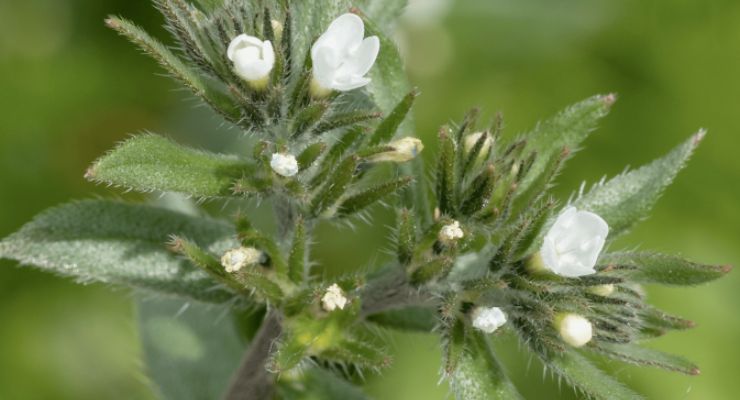Market Updates, Research
Review Highlights Ahiflower Oil Among Sustainable Marine Omega-3 Alternatives
Fish oil alone cannot sustainably meet the global population’s long-chain polyunsaturated fatty acid requirements, according to a new publication.

By: Mike Montemarano

Ahiflower (Buglossoides arvensis), a plant-based source of omega-3 fatty acids in the form of ALA, SDA, and GLA, and omega-6 fatty acids in the form of linoleic acid, was highlighted among sustainable fish-oil alternatives in a new review published in Current Opinion in Clinical Nutrition and Metabolic Care by Ella J. Baker, PhD, research fellow at the University of Southampton’s School of Human Development and Health and Human Development.
The premise behind the article is that traditional sources of very long-chain polyunsaturated fatty acids (VLC-PUFA) can’t sustainably meet nutritional requirements of a global population alone, through fish oil supplements, highly-concentrated pharmaceuticals, enteral/parenteral emulsions used in medical nutrition, and aquaculture feeds.
According to Baker, 1.25 million metric tons of fish oil were produced in 2022, with a corresponding EPA/DHA production of 150,000 metric tons. About half of global fish oil produced came from wild-harvested or farmed whole fish, with the other half coming from fish by-products.
The recent Peruvian fishery closures and other supply chain disruptions underscored the need to diversify sources of omega-3s, Baker noted. “This demand [for EPA and DHA] may not be met because of insufficient fisheries catch due to reduction in fish stocks from overfishing and climate change. Hence alternative sources of EPA and DHA to fish need to be seriously considered and their potential explored.”
Baker recommended three plant-based alternatives to the anchovies, sardines, herring, and menhaden typically used to make fish oil. She named Ahiflower oil, which is produced by Natures Crops and has the highest combined omega-3 stearidonic (SDA) and gamma-linoleic acid (GLA) content, along with microalgae-derived EPA and DHA sources, as well as sourcing omega-3s from genetically-modified canola or camelina seed sources.
The algal and GMO terrestrially farmed sources of EPA and DHA or its metabolic precursors may mimic recognized health benefits of fish oil supplementation, according to Baker.
Ahiflower’s Standout Attributes
This review is the first of its kind to recognize recent scientific publications which suggest that the profile of omega-3 and omega-6 fatty acids found in Ahiflower may offer unique health effects and stronger metabolism into EPA and DHA compared to other plant-based counterparts.
For instance, SDA metabolism is thought to produce inflammatory-modulating oxylipins not found in EPA or DHA metabolism. There is also now evidence from human clinical studies that there exists a dose-dependent relationship between Ahiflower and circulating SDA, ETA, and EPA, a wider array of omega-3s than what is found in EPA/DHA supplementation. Ahiflower may also activate the production of the cytokine IL-10 at greater rates than soya or fish oil, per human and animal studies. Lastly, Ahiflower oil supplementation appears to have a host of other unique effects on biomarkers of whole-body and hepatic glucose metabolism, immune support, lipid mediators, and intestinal microbiota.
“SDA has qualitatively similar effects to EPA and combinations of EPA and DHA, but these are greater than the effects of ALA (at the same intake level),” Baker concluded. “Recent experimental studies with oil from a commercially grown crop that is rich in SDA, Ahiflower oil, have reported remarkable effects which might result from its high content of ALA, SDA, and GLA.”


